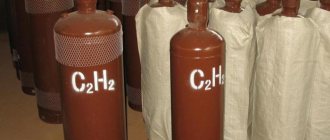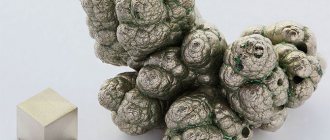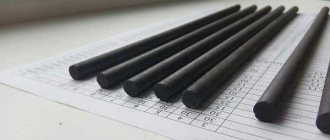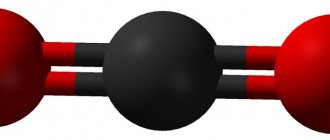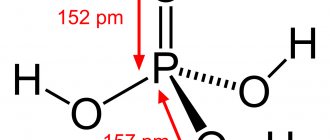Acetylene production
Acetylene can be produced in laboratory and industrial conditions. To obtain acetylene in the laboratory, it is enough to drop a small amount of water onto calcium carbide (this is its formula - CaC2). after this, a violent reaction of acetylene release begins. To slow it down, it is permissible to use table salt (NaCl formula).
In an industrial environment, things are somewhat more complicated. To produce acetylene, pyrolysis of methane, as well as propane and butane, is used. In the latter case, the acetylene formula will contain a large number of impurities.
The carbide method of acetylene production ensures the production of clean gas. But, this method of obtaining a product must be provided with a large amount of electricity.
Pyrolysis does not require a large amount of electricity, the whole point is that to produce gas, it is necessary to heat the reactor and for this they use gas circulating in the primary circuit of the reactor. But in the flow that moves there, the gas concentration is quite small.
Isolating acetylene with a pure formula in the second case is not the easiest task and its solution is quite expensive. There are several ways to produce the acetylene formula in an industrial setting.
Electric cracking
The conversion of methane into acetylene occurs in an electric arc furnace, where it is heated to a temperature of 2000-3000 °C. In this case, the voltage on the electrodes reaches 1 kV. Methane is heated to 1600 °C. To obtain one ton of acetylene, it is necessary to spend 13,000 kWh. This is a significant disadvantage of producing acetylene formula.
Technological diagram of cracking
Oxidative pyrolysis
This method is based on mixing methane and oxygen. After producing the mixture, part of it is sent for combustion and the resulting heat is sent to heat the raw materials to a temperature of 16,000 °C. This process is characterized by continuity and rather modest consumption of electrical energy. Today, this method can most often be found in acetylene production plants.
Technological diagram of the oxidative pyrolysis process
In addition to the listed technologies for the production of acetylene formulas, such as homogeneous pyrolysis and low-temperature plasma are used. All of them differ in the amount of energy costs and, as a result, different characteristics of the resulting gas and its formula.
Content
- 1 Receipt
- 1.1 In the laboratory
- 1.2 In industry
- 1.2.1 Preparation by pyrolysis
- 1.2.1.1 Electrocracking
- 1.2.1.2 Regenerative pyrolysis
- 1.2.1.3 Oxidative pyrolysis
- 1.2.1.4 Homogeneous pyrolysis
- 1.2.1.5 Pyrolysis in a low-temperature plasma jet
- 1.2.2 Carbide method
- 2 Physical properties
- 3 Chemical properties
- 4 History
- 5 Application
- 6 Security
- 7 Notes
- 8 Literature
- 9 Links
Read also: Sandpaper grain table and roughness
Advantages
The mention of gas welding immediately brings to mind acetylene. Indeed, this gas is most often used for this process. It, in combination with oxygen, provides the highest combustion temperature of the flame. But in recent years, due to the development of various types of welding, the use of this type of metal joining has decreased somewhat. Moreover, in some industries there has been a complete abandonment of the use of these technologies. But for certain types of repair work it still remains indispensable.
The use of acetylene allows you to obtain the following advantages:
- maximum flame temperature;
- there is the possibility of generating acetylene directly at the workplace or purchasing it in special containers;
- Quite low cost compared to other flammable gases.
However, acetylene also has certain disadvantages that limit its use. The most important thing is the danger of explosion. When working with this gas, it is necessary to strictly observe safety precautions. In particular, work should be carried out in a well-ventilated area. If operating conditions are violated, some defects may appear, for example, burnouts.
What to do if there is a fire
Improper use of acetylene can lead to dire consequences. This gas explodes and causes great destruction. What to do if there is a fire?
- If a fire occurs, all containers filled with acetylene should be immediately removed from the hazardous area. Those cylinders that remain should be constantly cooled with ordinary water or a special composition. The containers must cool completely.
- If the gas that comes out of the cylinder ignites, the container should be closed immediately. To do this, use a non-sparking key. After this, the container must be cooled.
- In the event of a severe fire, extinguishing the fire should only be done from a safe distance. In such a situation, it is worth using fire extinguishers filled with a composition containing a phlegmatizing concentration of nitrogen 70% by volume, also carbon dioxide 75% by volume, sand, jets of water, compressed nitrogen, asbestos sheet, and so on.
Acetylene formula
The structure of the acetylene molecule
Acetylene has a simple formula - C2H2. The relatively cheap method of producing it by mixing water and calcium carbide has made it the most widely used gas for joining metals. The temperature at which a mixture of oxygen and acetylene burns causes solid carbon particles to be released.
Acetylene can be delivered to the work site in special containers (gas cylinders), or it can be obtained directly at the workplace using a specially designed reactor. Where the mixing of water and calcium carbide occurs.
Links
- Acetylene // Encyclopedic Dictionary of Brockhaus and Efron: in 86 volumes (82 volumes and 4 additional). - St. Petersburg, 1890-1907.
| Hydrocarbons | |
| Alkanes | Methane • Ethane • Propane • Butane • Pentane • Hexane • Heptane • Octane • Nonane • Decane • Undecane • Dodecane • Tridecane • Tetradecane • Hexadecane • Heptadecane • Octadecane • Nonadecane • Eicosane • Docosane • Hectane |
| Alkenes | Ethylene • Propene • Butenes • Pentenes • Hexenes • Heptenes • Octene |
| Alkynes | Acetylene • Propyne • Butine |
| Dienes | Propadiene • Butadiene • Isoprene • Cyclobutadiene |
| Other unsaturated | Vinylacetylene • Diacetylene • Carotene |
| Cycloalkanes | Cyclopropane • Cyclobutane • Cyclopentane • Cyclohexane • Decalin • Indane • Indene |
| Aromatic | Benzene • Toluene • Dimethylbenzenes • Ethylbenzene • Propylbenzene • Cumene • Styrene • Phenylacetylene • Indane • Diphenyl • Diphenylmethane • Triphenylmethane • Tetraphenylmethane • Indene |
| Polycyclic | Naphthalene • Anthracene • Benzanthracene • Pentacene • Phenanthrene • Pyrene • Benzpyrene • Azulene • Chrysene |
acetylene, acetylene + water, acetylene Wikipedia, acetylene Wikipedia, acetylene gargan avah, acetylene Donetsk, acetylene production, acetylene formula, acetylene chlorination, acetylene generator
Chemical and physical properties
Some chemical properties
The properties of acetylene are largely determined by its formula. That is, the presence of carbon and hydrogen atoms connected to each other.
Mixing acetylene with water, with the addition of catalysts such as mercury salts, leads to the production of acetaldehyde. The triple bond of the atoms contained in the acetylene molecule leads to the fact that during combustion it releases 14,000 kcal/cu. m. During the combustion process, the temperature rises to 3000 °C.
This gas, under certain conditions, can turn into benzene. To do this, you need to heat it to 4000 °C and add graphite.
The hydrogen contained in the molecules shows acidic properties. That is, they are quite easily separated from the molecule in the form of protons. Acetylene is able to decolorize water containing bromine and a solution of potassium permanganate.
The molar mass of acetylene is 26.04 g/mol. Acetylene density is 1.1 kg/m³.
Physical properties
Under standard conditions, acetylene is a colorless gas that is practically insoluble in water. It begins to boil at -830 °C. When compressed, it begins to decompose, releasing a large amount of energy. Therefore, steel cylinders capable of storing gas under high pressure are used to store it.
This gas must not be released into the atmosphere. Its formula may have a negative impact on the environment.
Welding technology and modes
Acetylene-oxygen mixtures are used to join parts made of carbon and low-alloy steels. For example, this method is widely used to create permanent pipeline connections. For example, pipes with a diameter of 159 mm with a wall thickness of no more than 8 mm. But there are also some restrictions; joining steel grades 12×2M1, 12×2MFSR using this method is unacceptable.
Welding with acetylene
Flame in acetylene welding
Selecting mode parameters
To prepare the mixture necessary for combining metals, use the formula 1/1,2. When processing workpieces made of alloy steels, the welder must monitor the state of the flame. In particular, an excess of acetylene should not be allowed.
The consumption of the mixture with the oxygen/acetylene formula is 100-130 dm3/hour per 1 mm of thickness. The flame power is regulated using a burner, which is selected depending on the material used, its characteristics, thickness, etc.
To perform welding with acetylene, welding wire is used. Its grade must correspond to the steel grade of the parts being welded. The diameter of the wire is determined depending on the thickness of the metal being welded.
For the convenience of technologists and welders themselves, there are many tables on the basis of which you can quite easily select a welding mode. To do this you need to know the following parameters:
- wall thickness of welded workpieces;
- type of welding - left, right;
Based on this, you can determine the diameter of the filler wire and select the acetylene consumption. For example, the thickness is 5-6 mm, tip No. 4 will be used to perform the work. That is, based on the tabular data, the wire diameter will be 3.5 mm for left welding, 3.5 mm for right welding. Acetylene consumption in this case will be for left welding method 60-780 dm3/hour, with the right 650-750 dm3/hour.
Welding is performed in small sections of 10-15 mm. The work is performed in the following sequence. At the first stage, the edges are melted. After this, the root suture is applied. Once the root formation is complete, welding can continue. If the thickness of the workpieces is 4 mm, then welding can be performed in one layer. If the thickness exceeds the specified one, then a second one must be applied. It is laid only after the root of the seam has been completed along the entire specified length.
To improve the quality of welding, preheating is allowed. That is, the future welded joint is heated using a torch. If this method is adopted as a basis, then warming up must be done again after each stop.
Seams can be made with gas in any spatial position. For example, when making a vertical seam there are some peculiarities. So, the vertical seam should be made from bottom to top.
When performing welding work, breaks in work are unacceptable, at least until the entire seam is cut. When stopping operation, the burner must be withdrawn slowly, otherwise seam defects - cavities and pores - may occur. An interesting feature exists when welding pipelines; a draft is not allowed in it and therefore the ends of the pipes must be plugged.
Types of acetylene
The industry produces two types of acetylene - solid and gas.
Gaseous
Acetylene has a pungent odor and this provides certain advantages in case of leakage. Its mass is close to that of atmospheric air.
Liquid
Liquid acetylene has no color. It has one feature: it refracts color. Acetylene, both liquid and gaseous, is a dangerous substance. That is, if the rules for handling it are violated, an explosion can occur at any second, even at room temperature. To increase safety when handling it, so-called phlegmatization is used. That is, a porous substance is placed in a container intended for acetylene storage. Which reduces its danger
Safety
Because acetylene is insoluble in water and its mixtures with oxygen can explode over a very wide range of concentrations, it cannot be collected in gasometers.
Acetylene explodes at temperatures around 500 °C or pressures above 0.2 MPa; CPV 2.3-80.7%, auto-ignition temperature 335 °C. Explosiveness is reduced when acetylene is diluted with other gases, such as nitrogen, methane or propane.
When acetylene comes into contact with copper and silver for a long time, copper and silver acetylenides are formed, which explode upon impact or increased temperature. Therefore, when storing acetylene, materials containing copper (for example, cylinder valves) are not used.
Acetylene has a weak toxic effect. For acetylene, the maximum permissible concentration limit is normalized. = MPC s.s. = 1.5 mg/m3 according to hygienic standards GN 2.1.6.1338-03 “Maximum permissible concentrations (MAC) of pollutants in the atmospheric air of populated areas.”
MPCr.z. (working area) is not established (according to GOST 5457-75 and GN 2.2.5.1314-03), since the concentration limits of flame distribution in a mixture with air are 2.5-100%.
It is stored and transported in white steel cylinders filled with an inert porous mass (for example, charcoal) (with a red lettering “A”) in the form of a solution in acetone under a pressure of 1.5-2.5 MPa.
Acetylene reactions
Acetylene reacts with various compounds, for example, copper and silver salts. As a result of such interactions, substances called acetylenides are obtained. Their distinguishing feature is their explosiveness.
Acetylene production
Acetylene combustion
Acetylene oxidation reaction
Polymerization reaction
Acetylene substitution reaction
Features of the substance
Acetylene, the properties and use of which have not been fully studied, can lead to an accident and severe destruction as a result of an explosion. Here's some data. The explosion of one kilogram of this substance releases 2 times more thermal energy than the explosion of the same amount of TNT, and one and a half times more than the explosion of one kilogram of nitroglycerin.
Use of acetylene
In addition to welding, acetylene is used in the following cases:
- to produce bright light in autonomous light sources (carbide lamp);
- in the manufacture of explosives, these are the already mentioned acetylenides;
- obtaining certain chemicals, for example, vinegar, alcohol, polymers, etc.;
- In addition, acetylene has also found its use in rocket technology, as a fuel component.
Cutting metal with acetylene
Use of acetylene in a lamp
